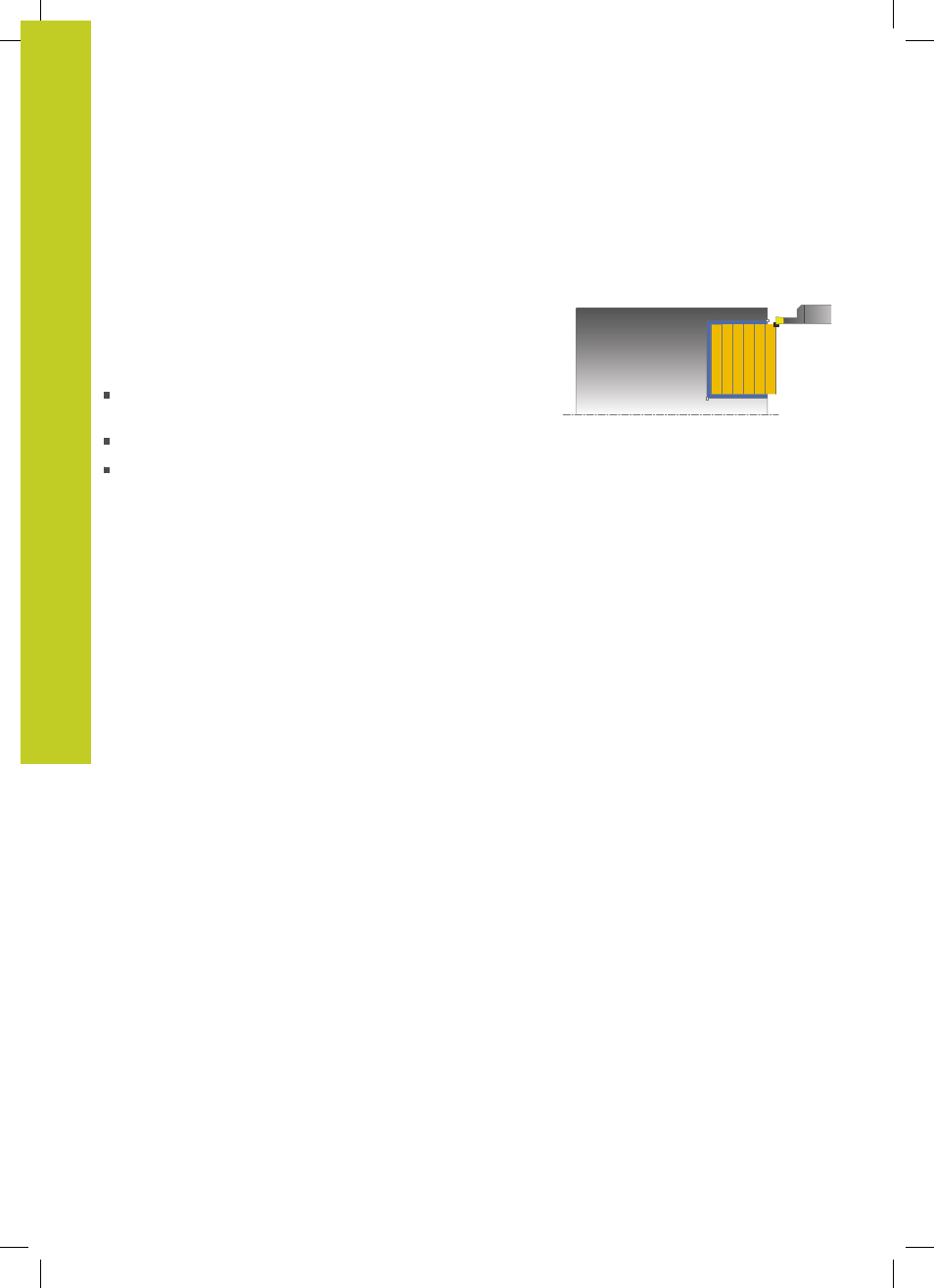Application, Roughing cycle run, Axial recessing extended(cycle 852, din/iso: g852) – HEIDENHAIN TNC 640 (34059x-02) Cycle programming User Manual
Page 344

Cycles: Turning
13.20 AXIAL RECESSING EXTENDED
(Cycle 852, DIN/ISO: G852)
13
344
TNC 640 | User's Manual Cycle Programming | 5/2013
13.20
AXIAL RECESSING EXTENDED
(Cycle 852, DIN/ISO: G852)
Application
This cycle enables you to recess right-angled slots in traverse
direction. With recess turning, a recessing traverse to plunging
depth and then a roughing traverse is alternatively machined. The
machining process thus requires a minimum of retraction and
infeed movements. Expanded scope of function:
You can insert a chamfer or curve at the contour start and
contour end.
In the cycle you can define angles for the side walls of the slot
You can insert radii in the contour edges
You can use the cycle either for roughing, finishing or complete
machining. Turning is run paraxially with roughing.
The cycle can be used for inside and outside machining. If the start
diameter
Q491 is larger than the end diameter Q493, the cycle
runs outside machining. If the start diameter Q491 is less than the
end diameter Q493, the cycle runs inside machining.
Roughing cycle run
The TNC uses the tool position as cycle starting point when a
cycle is called. If the Z coordinate of the starting point is less than
Q492 CONTOUR START IN Z, the TNC positions the tool in the Z
coordinate to
Q492 and begins the cycle there.
1 From the cycle starting point, the TNC recesses until the first
plunging depth.
2 The TNC cuts the area between the starting position and the
end point in traverse direction at the defined feed rate
Q478.
3 If only one machining direction
Q507=1 was specified in
the cycle, the TNC retracts the tool by the set-up clearance,
positions the tool back at rapid traverse and approaches the
contour again with the defined feed rate. With machining
direction
Q507=0, infeed is on both sides.
4 The tool recesses to the next plunging depth.
5 The TNC repeats this process (2 to 4) until the slot depth is
reached.
6 The TNC returns the tool to set-up clearance and machines a
recessing traverse on both side walls.
7 The TNC positions the tool back at rapid traverse to the cycle
starting point.